Plastic flamingos are good for science
The other evening I found myself back in my old room at my parents' house arranging small toy flamingos (that a friend had bought me as a jokey present). I placed these model birds into groups so that I could take photos of them. You'd probably be right to wonder about my psychological health but actually I was doing some work for my PhD. In October I fly to Chicago to attend a zoo animal welfare conference and to talk about how we, as zoo scientists, can go and measure the welfare of the birds we keep. And so it was to this end that I was taking photos of these toy birds.
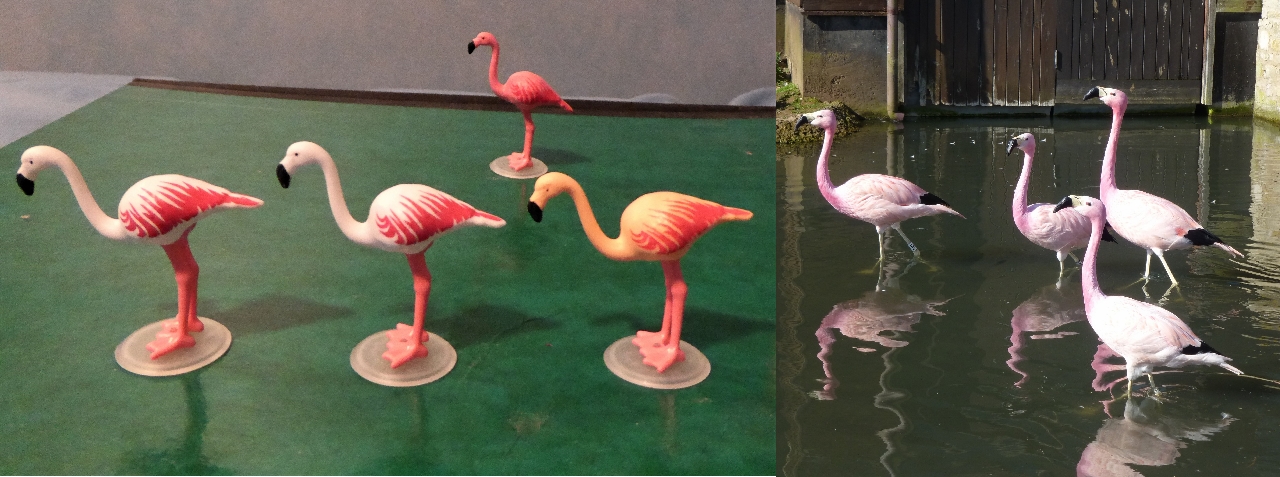 Spot the difference...? Animal behaviour science can take many forms!
Spot the difference...? Animal behaviour science can take many forms!
There are lots of behaviours that I observe that are difficult to illustrate with photographs of the birds themselves. Maybe what the flamingos are doing looks too similar to the untrained eye to demonstrate my point, or maybe the camera cannot accurately capture the actions of the birds as they are performing them, so a staged set-up is more useful. Take the example in the photo below... How do we know what the birds are feeling? We can't ask them. They can't tell us in words. We have to judge by looking at their actions and observing what they do. We have some reliable clues for determining a happy flamingo (courtship, nesting, looking as pink as possible)- but what about a flamingo that was not feeling its best?
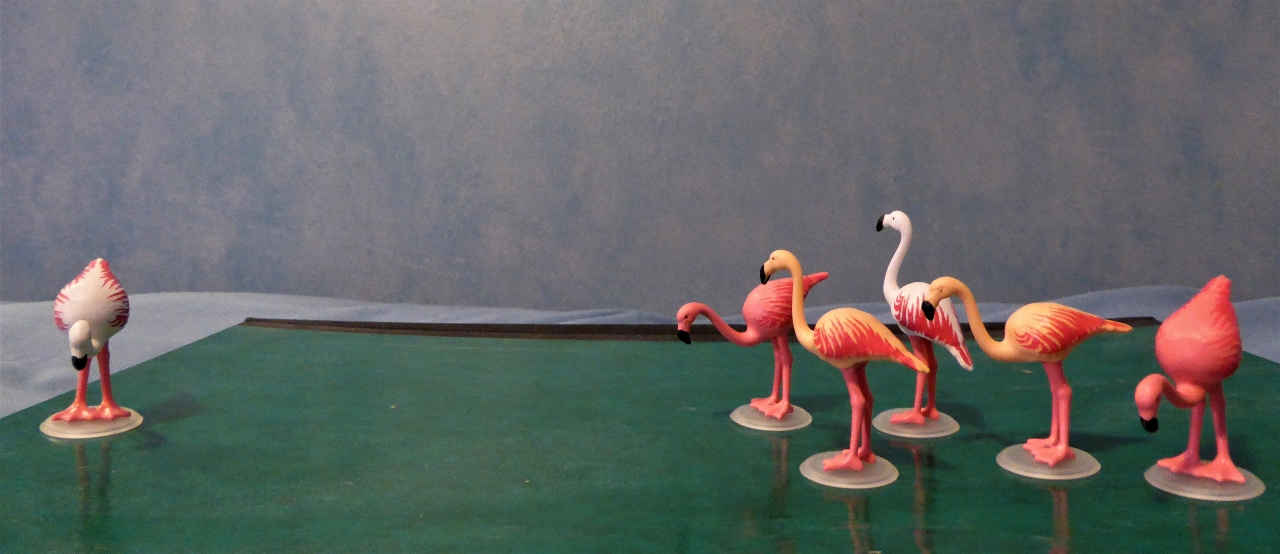 All on your lonesome? A flamingo that consistently takes itself away from the flock is worthy of our extra attention and some TLC.
All on your lonesome? A flamingo that consistently takes itself away from the flock is worthy of our extra attention and some TLC.
Because flamingos are sociable, and we get to know their routine, when a bird stops acting in the manner of the rest of the flock, we know its time to step in and check that this individual is OK. Sometimes it could be because the bird is a tired parent that needs some down time, or perhaps it's a moulting bird that is conserving its energy. Even so, behaviour is a clue that is useful for us to make sure that all WWT flamingos are given the best of care.
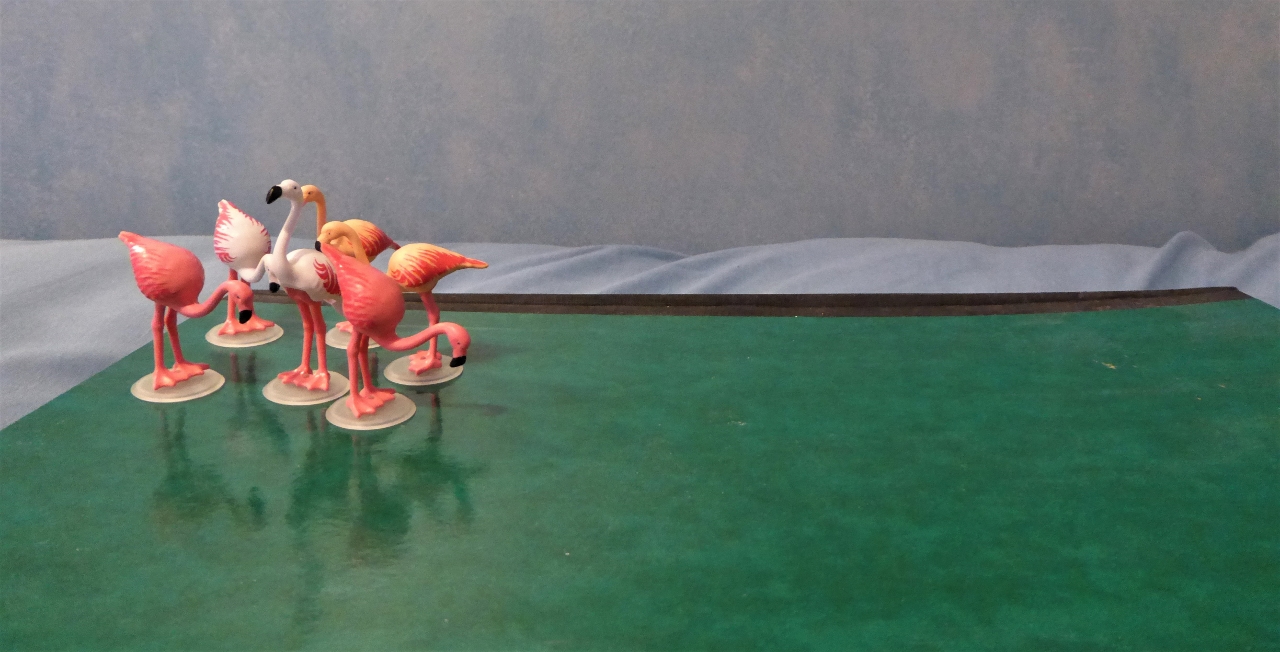 Three's a crowd... and the rest. If the whole is flock is unsettled they may remain tightly-knit together as this brings extra security.
Three's a crowd... and the rest. If the whole is flock is unsettled they may remain tightly-knit together as this brings extra security.
We can also use behaviour to check on the welfare of the whole group as well as of the individual. A flamingo flock that has been spooked or isn't too happy with what is going on around them will stick closely together and remain in one place. If this happens a lot, perhaps it is time to investigate why the birds are feeling like they are. We can rule out some positive reasons that flamingos might be crowded together- for example when they are sat on nests, or doing their courtship dance, or when they are all feeding together. This is about the context of why the behaviour is occurring. And fortunately for me, I had to create a mock-up of this situation as the Slimbridge flamingos are always everywhere all over their enclosures. To be an objective scientist, I've staged what such happy flamingos would look like in the photo below :-)
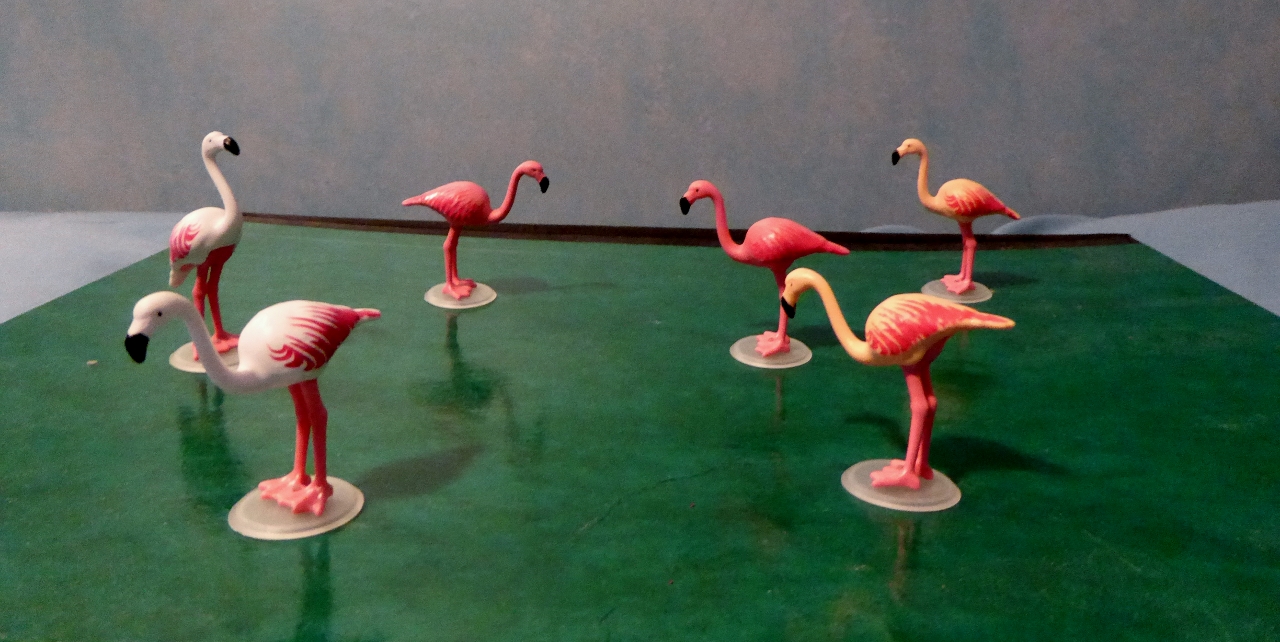 Relaxed flamingos spread out, keep distances between birds, and generally mooch around all of their enclosure.
Relaxed flamingos spread out, keep distances between birds, and generally mooch around all of their enclosure.
What about flamingo friends? Obviously a key features of these blog posts and I have posted numerous photos of friendly birds in previous instalments. But for explaining to an audience, small plastic models that are all the same size and shape really illustrate how we measure flamingo buddies. We judge who's being friendly to whom by looking distances between birds (who do they allow close?)? It's easy to show this with a model. Flamingos that like each other do the same things together in the same area. You see that I've demonstrated this in the photo below- hopefully it's clear to see how I can then judge social groups in real life.
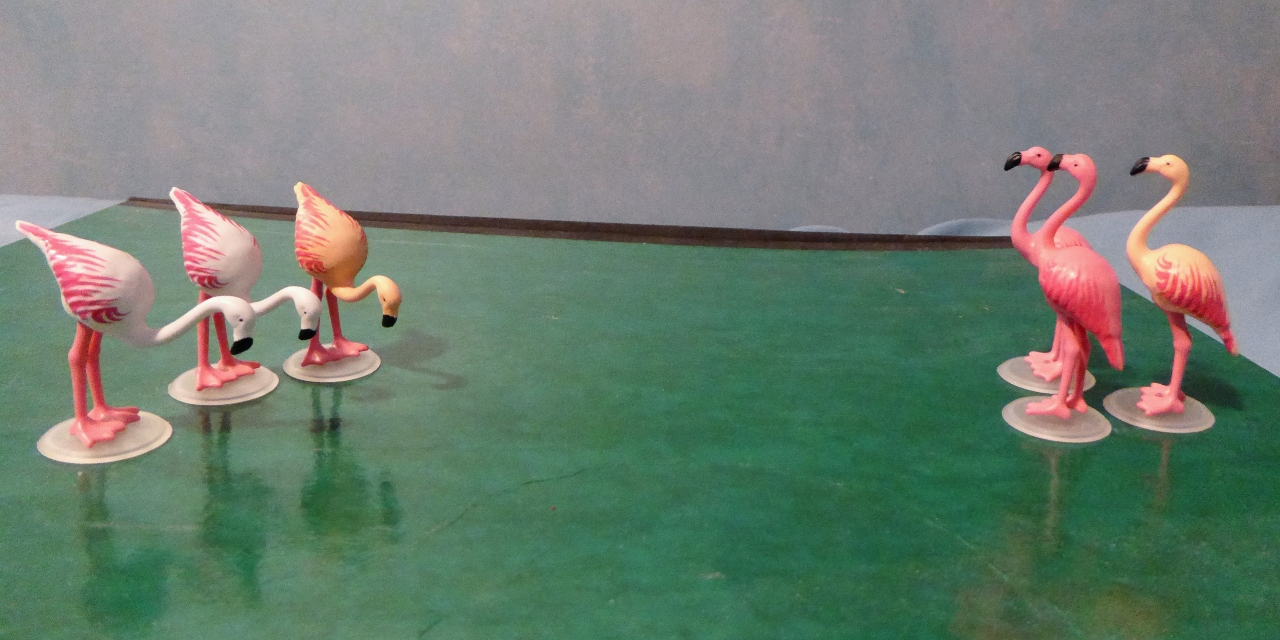 Flamingo friends do the same things together.
Flamingo friends do the same things together.
From the information (data) that I collect, all of the relationships that exist between birds are placed together into a network that illustrates the connections that each flamingo has in its flock. What is important from this network is the identification of what are called dyads. A dyad is simply a bond between two birds. In the photo below I have shown what a network might look like in "real life". Dyads (pairs) with the strongest bonds (best friends) are generally seen more frequently together. This is the type of data that we've collected over the years, and it helps to visualise what this means to an audience.
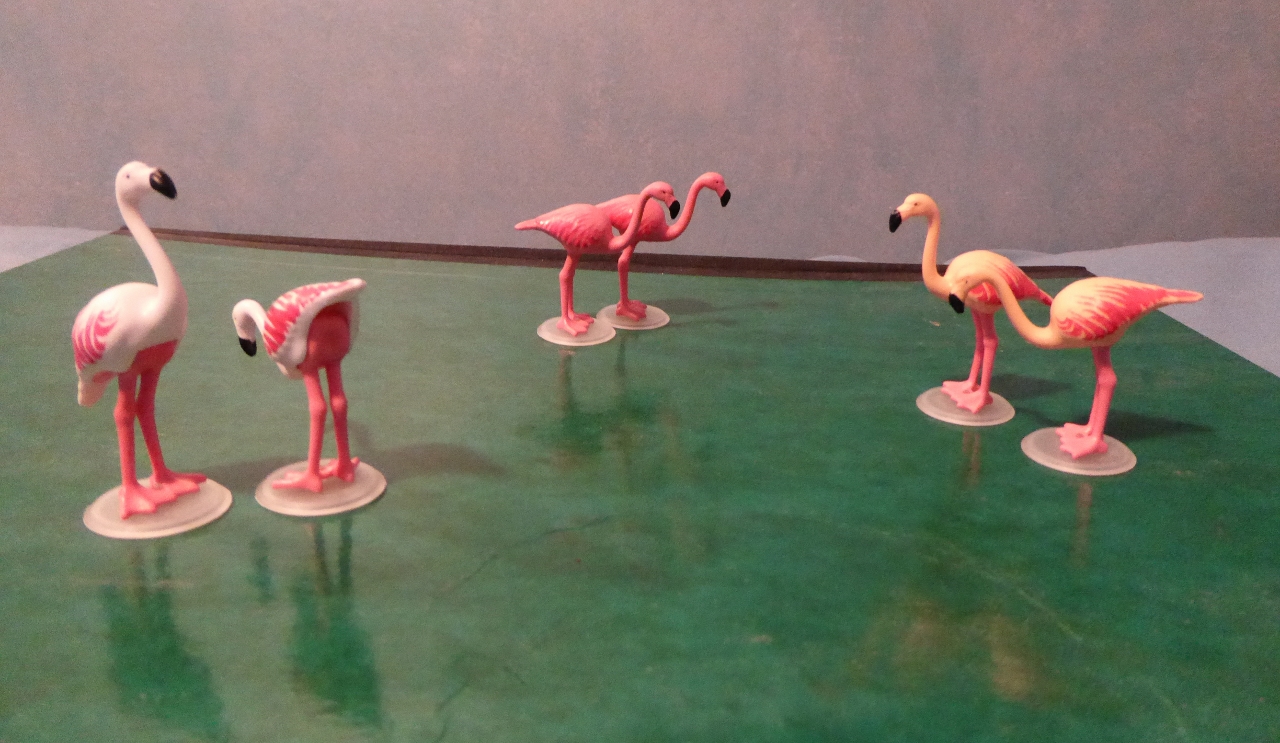 Identifying pairs of flamingos helps us work out the structure of a flock.
Identifying pairs of flamingos helps us work out the structure of a flock.
You can see in this photo of some real birds that it may be tricky to see what I mean. Easy in person when you are watching the birds yourself, more difficult for someone less familiar with the project. The plastic models are very helpful!
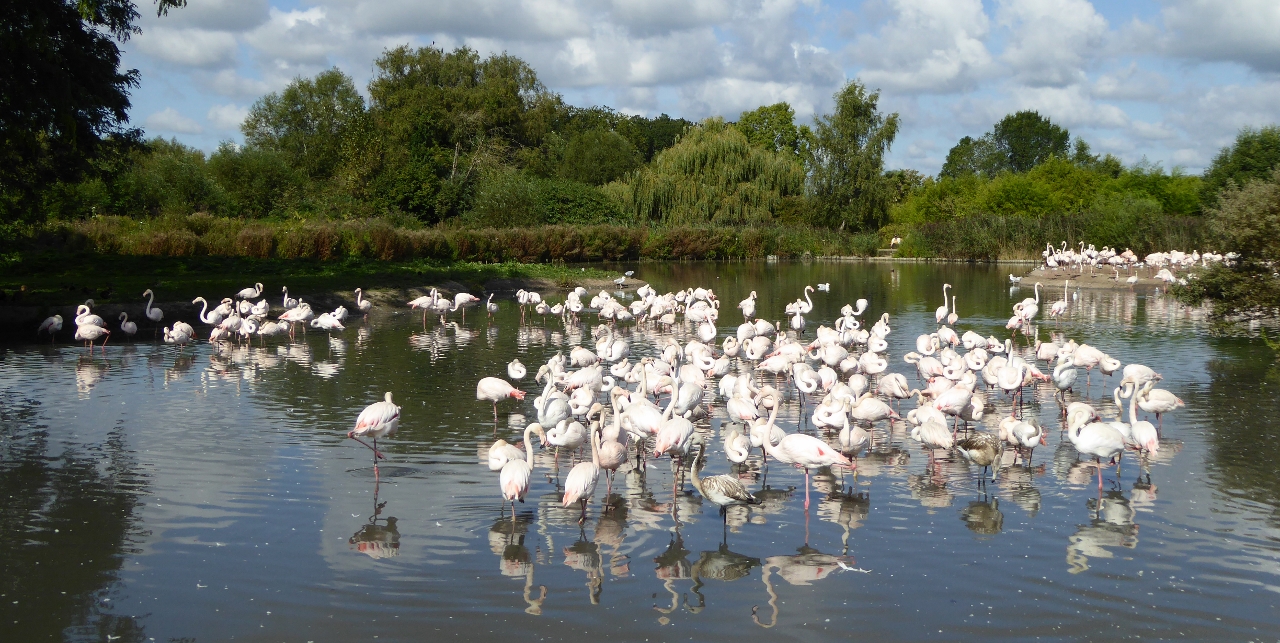 Who's who? Who's friendly? Sometimes it's hard to explain with a photo but easy when you watch in person.
Who's who? Who's friendly? Sometimes it's hard to explain with a photo but easy when you watch in person.
As you can see, sometimes it's useful to have a prop handy to explain science. And I am grateful to my friend who bought me what he thought was an amusing gift, but what has actually turned out to be a useful tool for communicating and explaining science. Even if no substitute for actually watching a real flamingo!



